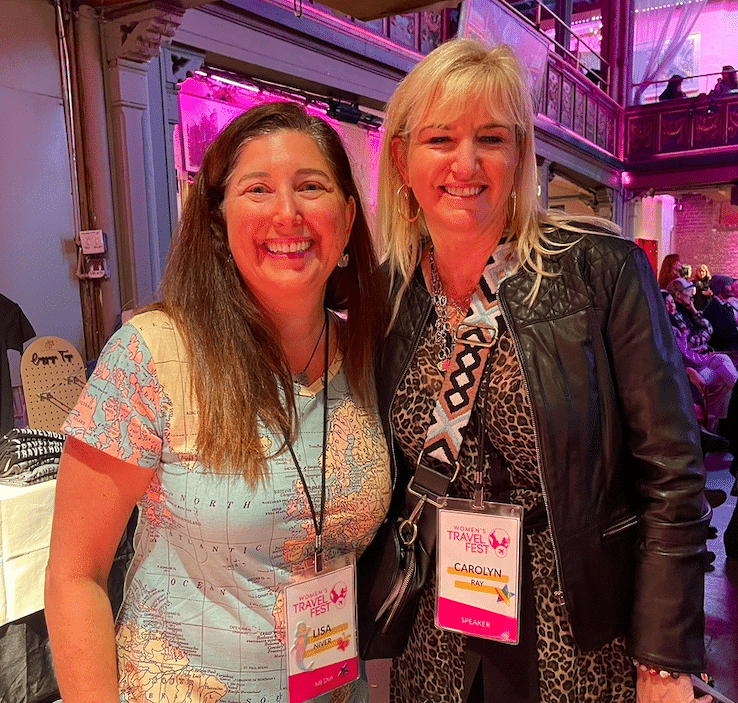In the past few weeks, I’ve been feeling nostalgic. It’s most likely a response to stress; waxing nostalgia has helped me evade feeling anxious lately over the deteriorating state of public safety in Los Angeles and the turmoil that is threatening to tear my beloved Israel apart at the seams (I would dedicate a column to the judicial crisis in Israel if I believed I had something new to add to the conversation).
Nostalgic escape partially explains why last week’s column made the case that menial summer jobs are a rite of passage for most teenagers. Few things are more nostalgic than reflecting on teen summer jobs.
Last month, millions of women worldwide luxuriated in pink-tinged nostalgia with the release of the much-anticipated film “Barbie.” The movie is already a verifiable summer blockbuster, having grossed $162 million in its debut weekend.
I may feel that I don’t have much to add to the conversation about Israel today, but where Barbie is concerned, I believe I have some thoughts that are valuable, if only because they’re different.
I belong to a group of former little girls for whom, due to financial constraints or having recently arrived to this country, access to just one Barbie doll was a privilege. I call us the “One Barbie-ers.”

Unlike most of our friends, who had several Barbies, ample doll clothes and accessories, and even Barbie cars, horses and houses, we One Barbie-ers had, you guessed it, one Barbie, which we protected vigilantly, and one set of Barbie clothes, which we made sure to never damage (at least on purpose). Sometimes, by sheer luck, we were granted two Barbies, and our sense of wonder was matched only by our fear of losing one of them.
For us, there was no cutting Barbie’s hair with forbidden scissors or experimenting with her head, neck or limbs. Our Barbie lived wherever we made her a home, including shoeboxes, and wore “new” clothes whenever we decided to turn her shirt, skirt or dress inside out. And as for having a Ken doll, we knew better than to ask for one. The addition of another doll in that shoe box would only have meant another mouth to feed.
I’m kidding. We didn’t have Ken dolls because if our parents gave us the choice of a second doll, we would have blissfully opted for another Barbie. Ken was nice, but he was the sensible loafers to Barbie’s glorious stilettos.
We weren’t victims, nor were we constantly deprived of even basic niceties. We simply didn’t have many Barbies because our parents lived more modestly, didn’t want their daughters playing with such dolls, or both.
One friend who grew up in the ’80s in a lower-middle class home learned to tolerate Barbie knockoffs. “When we would go into K·B Toys,” she told me, “My sister and I would walk into the store, hold up a real Barbie doll and ask our mom, ‘Is this cheap?’ If the answer was ‘no,’ we would hold up another Barbie and ask the same question. Those were the only words we would say at the store: ‘Is this cheap?’”
My friend continued, “We not only got fake Barbie dolls, because we couldn’t afford real ones, but we also had to get fake Cabbage Patch kids. They were called Dream Babies.” I looked up Dream Babies on Google. They had a strange resemblance to Cabbage Patch Kids, but there was something about their faces that suggested they needed to eat more cabbage and other natural laxatives.
I have a special place in my heart for Barbie knock-offs. Like my Payless shoes and imitation Guess jeans, they were truly better than nothing.
It’s a well-known fact that Barbie was such a runaway hit when it was introduced in 1959 because it offered the first alternative to a baby doll. As book critic Maureen Corrigan told NPR’s “Fresh Air” last week, “My Betsy Wetsy always needed a diaper change; my Chatty Cathy needed to be taught not to interrupt; and my walking doll — whose name I’ve forgotten — always needed assistance lumbering around the living room. Before Barbie, playing with dolls was akin to running a combination nursery, rehab and assisted living facility.”
Back in Iran, my mother sewed my dolls (despite the fact that it was the late ’80s). My first introduction to a doll that resembled a grown woman was in Italy, when, in transit as refugees, my parents treated me to a Barbie knock-off they bought at a local outdoor bazaar for a few lira. I was delighted to have a doll that looked like a grown woman, even if it was made of such cheap plastic that the left leg and right arm broke off after a few days.
I didn’t care that my Marbie (mock Barbie) looked like an amputee; she was the first doll I owned that wasn’t made of stuffing.
I didn’t care that my Marbie (mock Barbie) looked like an amputee; she was the first doll I owned that wasn’t made of stuffing. I was always grateful to my mother for those hand-sewn, puffy rag dolls, but this Chinese-made, Italian-sold, limb-less Marbie was exhilarating.
In 1990, after we came to the United States, my parents bought me an actual Barbie. I’ll never forget that Barbie. She was elegant. She was a ballerina. And she was the cheapest Barbie at Kmart on Third Street and Fairfax Avenue.
It wasn’t that one Barbie doll was unaffordable, especially in the early 1990s; it was that I wanted more than one, because there was an unspoken understanding that any girl who only possessed one Barbie doll was, for lack of a better term, broke. But as most immigrants or refugees will attest, it’s often either a fake Barbie or real fruit juice, or a real Barbie and SunnyD.
I developed unrealistic body images from Barbie for different reasons: I was a Persian kid in a sea of many Ashkenazim. Back then, I would have traded an appendage for some blonde hair and blue eyes.
Did Barbie promote unrealistic body expectations to me? Of course. But I didn’t yearn for Barbie’s ample cleavage, laughably thin waist or long legs that, in real life, would have rendered her half-woman/half giraffe. I developed unrealistic body images from Barbie for different reasons: I was a Persian kid in a sea of many Ashkenazim. Back then, I would have traded an appendage for some blonde hair and blue eyes. Perhaps I could have borrowed an arm or a leg from my fake Barbie back in Italy.
In second grade, my parents magnanimously bought me a second Barbie, effectively disqualifying me from the One Barbie-ers group. “Hawaiian Barbie” had blindingly blonde hair and such a bad tan that I almost wanted to take her to see a dermatologist.
A few years later, my sister’s friend brought over a garbage bag-full of amazing Barbie clothes. But by then, I was entering middle school and no longer gave myself permission to play with Barbies. I had just turned 12 and was more interested in Boyz II Men than Barbies.
No matter how you feel about her, Barbie is an important part of various Jewish American contributions to pop culture that truly made this country stand out in the past 100 years.

Jewish readers should know that Barbie was created by an American Jewish businesswoman named Ruth Handler and her husband, Elliot, and that “Barbie” director Greta Gerwig, though herself not Jewish, told The New York Times that she hopes viewers will watch the film and “feel like I did at Shabbat dinner” when, as a young girl, Gerwig and her family were guests at Shabbat meals hosted by observant family friends. No matter how you feel about her, Barbie is an important part of various Jewish American contributions to pop culture that truly made this country stand out in the past 100 years.
And to all those One Barbie-ers, or those with Marbies that are still being purchased at the 99 Cents Only Store (and their limbs are still falling off): Be patient. Many good things still lie ahead, including rewarding education, fulfilling careers and family life and, if interest rates allow, a perfectly reasonable Dreamhouse.
Tabby Refael is an award-winning writer, speaker and weekly columnist for The Jewish Journal of Greater Los Angeles. Follow her on Twitter and Instagram @TabbyRefael





















 More news and opinions than at a Shabbat dinner, right in your inbox.
More news and opinions than at a Shabbat dinner, right in your inbox.